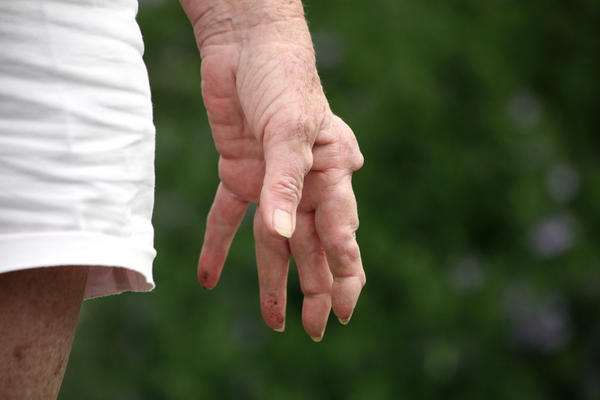<p>Some people who develop psoriasis actually develop something called psoriatic arthritis. While this is considered a type of the psoriasis condition specifically, it is actually a separate condition all on its own. There are several types of psoriatic arthritis and they affect people in different manners. Read on to find out what the condition is and what are the different types that could affect a person.<br />
<strong>What is Psoriatic Arthritis?</strong><br />
When a person has psoriasis, they have about a 25 percent chance of developing this further condition. The arthritis is an autoimmune disorder. This means it actually causes the body’s immune system to attack healthy tissue instead of the psoriasis outbreak. When a person has psoriatic arthritis, their own immune system will attack the connective tissues and joints in the arms and legs. This will cause such symptoms as allover aches, pain and stiffness in the joints, and swelling in the joints. People are afflicted by psoriatic arthritis in different ways. For some, it could take years to develop, while for others, the condition is sudden onset.<br />
People that fall between the ages of 30 years and 50 years and who already have psoriasis are most susceptible to psoriatic arthritis. Additionally, this is a genetic condition. If you have people in your family with the condition specifically, then you are more prone to contracting it if you have psoriasis. The sooner psoriatic arthritis is diagnosed, the more successfully it can be treated.<br />
<strong>The Types of Psoriatic Arthritis</strong><br />
There are actually five different types of the condition. It is a good idea to understand these different types so that you can consider your symptoms and determine what type you may have. The five types of psoriatic arthritis include the following:<br />
<strong><em>Symmetric Polyarticular </em></strong><br />
This is, by far, the most common type of psoriatic arthritis. About half of the people with the condition have this form. Essentially, this form of the condition attacks joints on each side of the body evenly. In other words, you may have the arthritis in your finger joints on both sides and both of your knees, etc. This type of psoriatic arthritis mimics the symptoms of rheumatoid arthritis and it can be debilitating if it is not treated properly.<br />
<em><strong>Asymmetric</strong> </em><br />
Unlike the symmetric form above, this type will affect one part of the body. This is the second most common of the types of psoriatic arthritis. In this case, your left hand could be affected while your right is not. This is a fairly mild form of arthritis and it can be treated easily.<br />
<em><strong>Spondylitis</strong> </em><br />
This type of condition is not as common, but about 15 percent of people with the condition will be afflicted by this form. In this case, the arthritis condition affects the spine specifically. It can cause stiffness, pain, and swelling in the spine. When the spine becomes swollen, it can cause pain in the arms and legs.<br />
<strong><em>Distal Interphalangeal Predominant (DIP)</em></strong><br />
DIP affects what are called the end joints specifically. This includes the tips of the fingers and the toes. Only about 5 percent of people with the condition will be affected by this form of it. Those who are will notice changes in their fingernails and toenails like discoloration, pitting, ridging, and separation of the nail.<br />
<strong><em>Arthritis Mutilans</em></strong><br />
The final type of psoriatic arthritis is the rarest by far. Very few people with the condition will be affected by arthritis mutilans, however, it cannot be overlooked. This is the severest of the conditions as well. It causes deformities to the joints, especially those in the hands and feet. In some cases, it causes a complete breakdown of the bones in the fingers and toes.<br />
Psoriatic arthritis can develop in anyone who already has psoriasis. It is a good idea to understand more about this arthritic condition if you do have it.<br />
Aishwarya Vohra is an expert health writer and has written for many good health blogs and online magazines</p>

The Different Types of Psoriatic Arthritis
